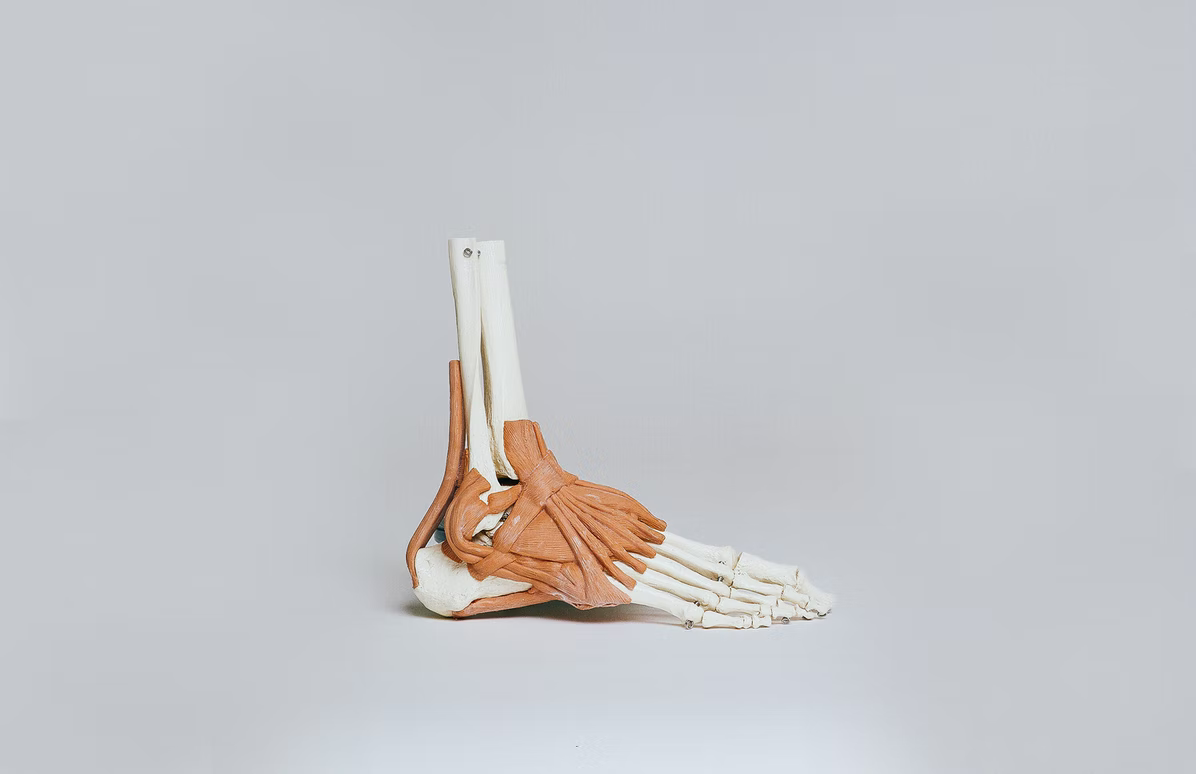How to heal and prevent supination

Supination of the feet can cause several health issues for our entire body. If you are prone to ankle and knee injuries and have discomfort or pain in your feet, legs, hips, or back, the source might be supination.
Learn here how to find out if you have supination of the feet, and how to treat and prevent it.
What is supination, and what are the causes?
To clarify, supination can describe two different things:
- As an anatomical term of movement, supination describes natural and necessary rotational movements of our arms and feet.
- As a medical issue, the supination of the feet describes a misalignment in our gait cycle that causes various problems for our entire body.
When we talk about supination, in most cases we refer to the medical condition. It occurs when we lack the right amount of inward rotation of our feet when we hit the ground when walking or running.
As a result, the weight of our body and the force of the impact rests on the outer edges and small toes. In a natural gait cycle, this pressure is instead spread across all toes and focuses on the big toe, stated Dr. Brian Cable. Dr. Brian Cable specializes in Orthopaedic Surgery and believes medicine is a shared responsibility that requires combined effort between physician and patient. A UCLA grad, he is a member of the American Board of Orthopaedic Surgeons. In his free time. Dr. Cable enjoys time with his three children and studying astronomy. His article, Remplissage: Expand Arthroscopic Repair Spectrum was published in the 2019 issue of Operative Techniques in Sports Medicine.
Since the small toes are not built to withstand this force regularly, constant pressure of this kind can lead to injuries, discomfort, and pain in our feet, legs, and the rest of our bodies.
Supination can develop as a result of a birth defect or injury. When a malformation or injury leads us to stress our feet and leg muscles incorrectly to avoid pain, these muscles develop lopsided. Over time, this wrong use of our body replaces our natural gait and becomes a habit.
Supination can be caused or worsened by several factors:
- genetics (for example, uneven length of legs, curvature of the feet, and more)
- frequent walking//standing/running on flat, hard surfaces
- worn out shoes or lack of proper shoes and running shoes for supination
- (old) injuries and scar tissue causing instability
- lopsided muscular compensation due to poor posture
- poor posture when running/exercising
- overuse
- limited range of movement or stiffness caused by aging or illnesses
- weak lower body musculature
What are the symptoms of supination?
Numerous symptoms can be caused by supination, including:
- instability of the ankles and stress on the knee
- frequent ankle or knee injuries like sprains
- posture problems
- lack of functionality and reduced range of motion in the lower body
- clawed or hammer toes
- stress fractures
- shin splints
- iliotibial band pain syndrome
- pain and discomfort in our feet, ankles, legs, hips, or back
- inflammation of the feet, especially the soles
- weakness or pain worsening when standing, running, or walking over time
- swelling, calluses, or bunions in the ankle, foot, or heel
How is supination treated?
Supination can be detected in gait analysis. Physical therapists or professional running supply stores offer these kinds of services.
If you supinate and suffer from the listed symptoms, the best treatment is to counter the incorrect movement and one-sided muscular compensation.
A physical therapist will:
- prescribe orthotic shoes or inserts to balance out the lack of inward rolling
- teach exercises to stretch your tendons and ligaments
- teach exercises to build up the muscles that support a natural gait cycle
When you suffer from inflammations and pain caused by untreated supination, a medical professional might prescribe medication and painkillers.
Surgery is rarely needed to treat supination but might become necessary because of injuries that were caused or engendered by the supination and its symptoms. However, the surgery typically treats the problem that was caused and not the root of the problem, the supination itself.
What can be done to prevent supination from happening in the future?
There are several tips that can help you prevent supination and its symptoms:
- the right shoes & ankle support: a podiatrist will help you find the right fit and additional support, like K-tape
- orthotic inserts: there are store-bought inserts, but the best solution are custom-made inserts for your own feet
- supporting exercises: a physical therapist can teach you the best exercises to counter your specific misalignment and muscle compensation
- warm-ups, cool-downs & stretching: before and after a period of strain, it is important to stretch and warm your lower body muscles up or cool down
- rest: overuse can worsen problems caused by supination; begin exercising gradually and don’t forget to rest
Are there any risks associated with supination?
There are health risks associated with untreated supination of the feet. The instability, stiffness, and strain can lead to more frequent injuries and inflammations. Left untreated, these repeated issues can add up to bigger health problems, like stress fractures.
The pain and discomfort caused by supination can extend to the entire body and posture, causing issues in several locations and leading to even unhealthier muscle compensation and bad posture.
Conclusion
Supination of the feet as a medical issue describes a wrong motion when our feet hit the ground when walking or running. This causes pressure and strain on the outer edges of our feet, which are not built to handle this kind of force. The result can be a variety of painful health issues in our entire body.
To treat supination, you can cancel out the faulty movement by wearing orthotic inserts and strengthening underused leg muscles. To prevent supination from occurring, wearing the right shoes, providing your ankles the right support, and frequent stretching and exercises are the best solutions.





